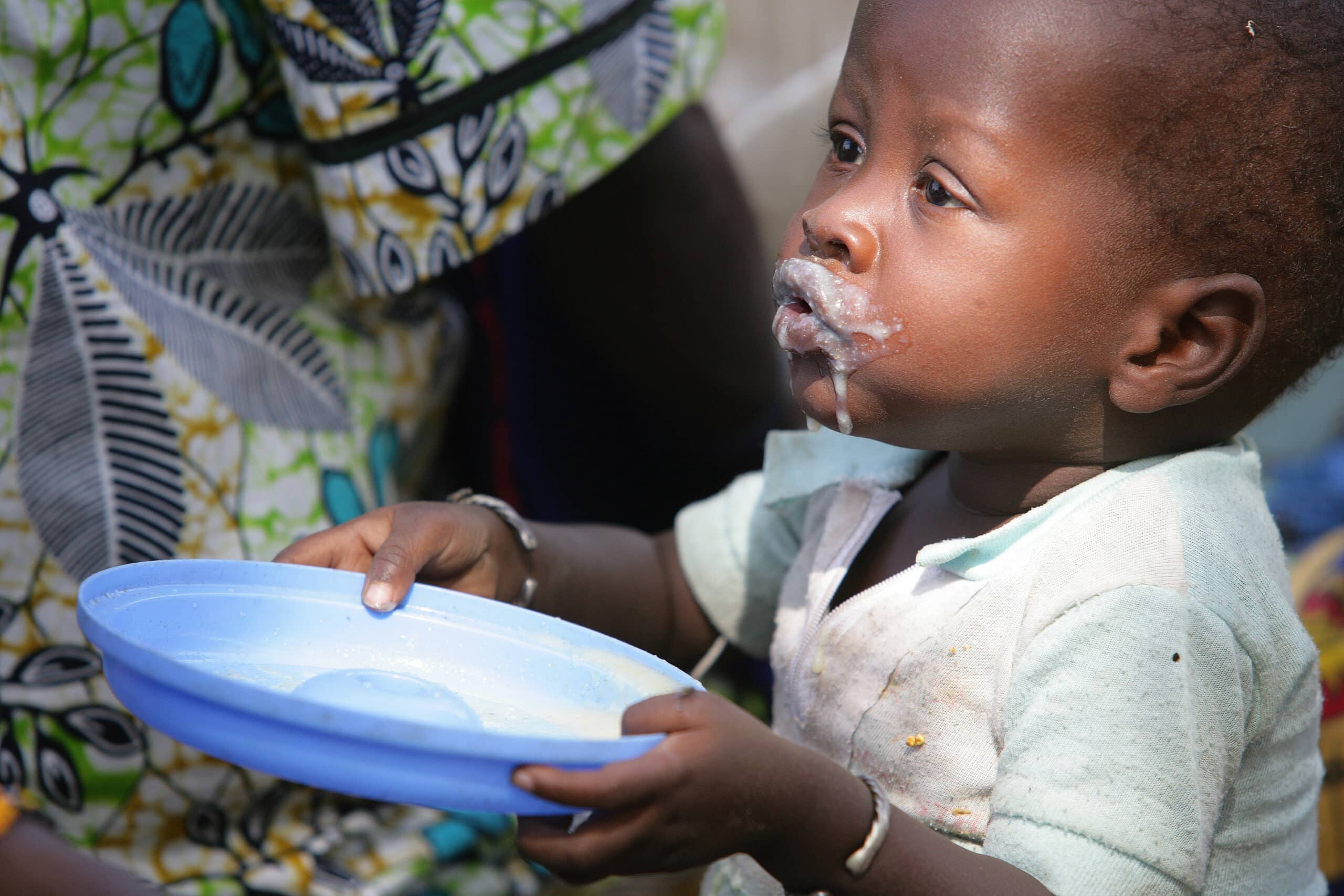Addressing nutrition deprivation in early childhood.
Across the world, millions of parents and families are struggling to provide nutritious and diverse foods that young children need to reach their full potential. Growing inequities, conflict, and climate crises, combined with rising food prices, the overabundance of unhealthy foods, harmful food marketing strategies, and poor child-feeding practices, are condemning millions of children to child food poverty.
UNICEF defines child food poverty as children’s inability to access and consume a nutritious and diverse diet in early childhood.
Child food poverty harms all children, but it is particularly damaging in early childhood when insufficient dietary intake of essential nutrients can cause the greatest harm to child survival, physical growth, and cognitive development, trapping children and their families in a cycle of poverty and deprivation.
‘Child Food Poverty: Nutrition Deprivation in Early Childhood’ examines the status, trends, inequities, and drivers of child food poverty in early childhood.
Key findings include:
- Globally, one in four children are living in severe child food poverty in early childhood, amounting to 181 million children under 5 years of age.
- Progress towards ending severe child food poverty is slow, but some regions and countries are proving that progress is possible and is happening.
- Severe child food poverty is experienced by children belonging to poor and non-poor households, indicating that household income is not the only driver of severe child food poverty.
- Children living in severe child food poverty are missing out on many nutrient-rich foods, while unhealthy foods are becoming entrenched in the diets of these children.
- The global food and nutrition crisis and localized conflicts and climatic shocks are intensifying severe child food poverty, especially in fragile countries.
- Severe child food poverty is driving child undernutrition: the prevalence of severe child food poverty is three times higher in countries with a high prevalence of child stunting.
Call to action: Ending severe child food poverty
The scale of severe child food poverty, the slow progress over the past decade, and the impacts of severe child food poverty on child survival, growth, and development demand a step change in commitment, actions, and accountability. To address child malnutrition governments and partners must invest in actions to improve children’s access to diverse and nutritious diets and end severe child food poverty.
UNICEF calls on national governments, development and humanitarian partners, donors, civil society and media, and academic and research organizations to:
- Elevate child food poverty reduction as a requirement for achieving global and national nutrition and development goals and a metric of success in meeting children’s right to food and nutrition; and commit resources to end child food poverty.
- Transform food systems by ensuring food environments make nutritious, diverse, and healthy foods the most accessible, affordable, and desirable option for feeding young children, and the food and beverage industry complies with policies to protect children from unhealthy foods and beverages.
- Leverage health systems to deliver essential nutrition services, including counseling and support on child feeding, to prevent and treat child malnutrition, prioritizing the most vulnerable children.
- Activate social protection systems to address income poverty in ways that are responsive to the food and nutrition needs of the most vulnerable children and their families, including social transfers to protect children at the highest risk of child food poverty.
- Strengthen data systems to assess the prevalence and severity of child food poverty; detect increases in child food poverty early, including in fragile and humanitarian contexts; track national and global progress in reducing severe child food poverty.
Highlights
‘Child Food Poverty: Nutrition Deprivation in Early Childhood’ examines the status, trends, inequities, and drivers of child food poverty in early childhood. The report also outlines an agenda for tackling the problem, including actions to transform food systems, leverage health systems, and activate social protection systems in ways that put children’s right to food and nutrition in early childhood at the center.
Credit: UNICEF

